Philips PML 9009 is the top LCD television from the manufacturer, featuring Mini LED backlighting. The device itself boasts excellent build quality, a stylish remote, and the manufacturer's exclusive multicolour Ambilight backlighting. In terms of picture quality, one could note a slight downside regarding black levels and contrast, which, to be honest, are not among the best and do not deliver as deep and vivid an image as seen in televisions from similar price ranges. However, it is worth mentioning that thanks to good algorithms responsible for the picture, its tonal quality was quite satisfactory. Therefore, the relatively low brightness of the display is well masked here and, with the implementation of Dolby Vision technology, allows access to the world of HDR content. What definitely deserves attention is the fluidity of transitions, which were truly outstanding and better than in some significantly more expensive units. The greatest advantage of this television is its performance in gaming. One cannot say a bad word about this aspect as the television truly shines here and will surely satisfy every user. The motion smoothing system is also one of those things for which the television deserves praise. With two sliders, the effect of which is noticeable at each position, every user can find the best degree of smoothness for themselves. Therefore, it can be confidently stated that when choosing a television for sports, one can point to PML9009 Philips as an excellent candidate. Although the TitanOS operating system is currently in the development phase and lacks a significant number of applications, we do not believe that the manufacturer will do nothing in this regard.
- Matching (Score)
- Our verdict
- TV appearance
- Where to buy
- Contrast and black detail
- HDR effect quality
- Factory color reproduction
- Color reproduction after calibration
- Smoothness of tonal transitions
- Image scaling and smoothness of tonal transitions
- Blur and motion smoothness
- Console compatibility and gaming features
- Input lag
- Compatibility with PC
- Viewing angles
- TV efficiency during daytime
- Details about the matrix
- TV features
- Apps
- Playing files from USB
- Sound
Philips PML9009 / 9019 / 9059 vs Panasonic W85
Direct compare
The Xtra / PML9019 / PML9059 / PML9009 / PML9049 / AMBILIGHT TV

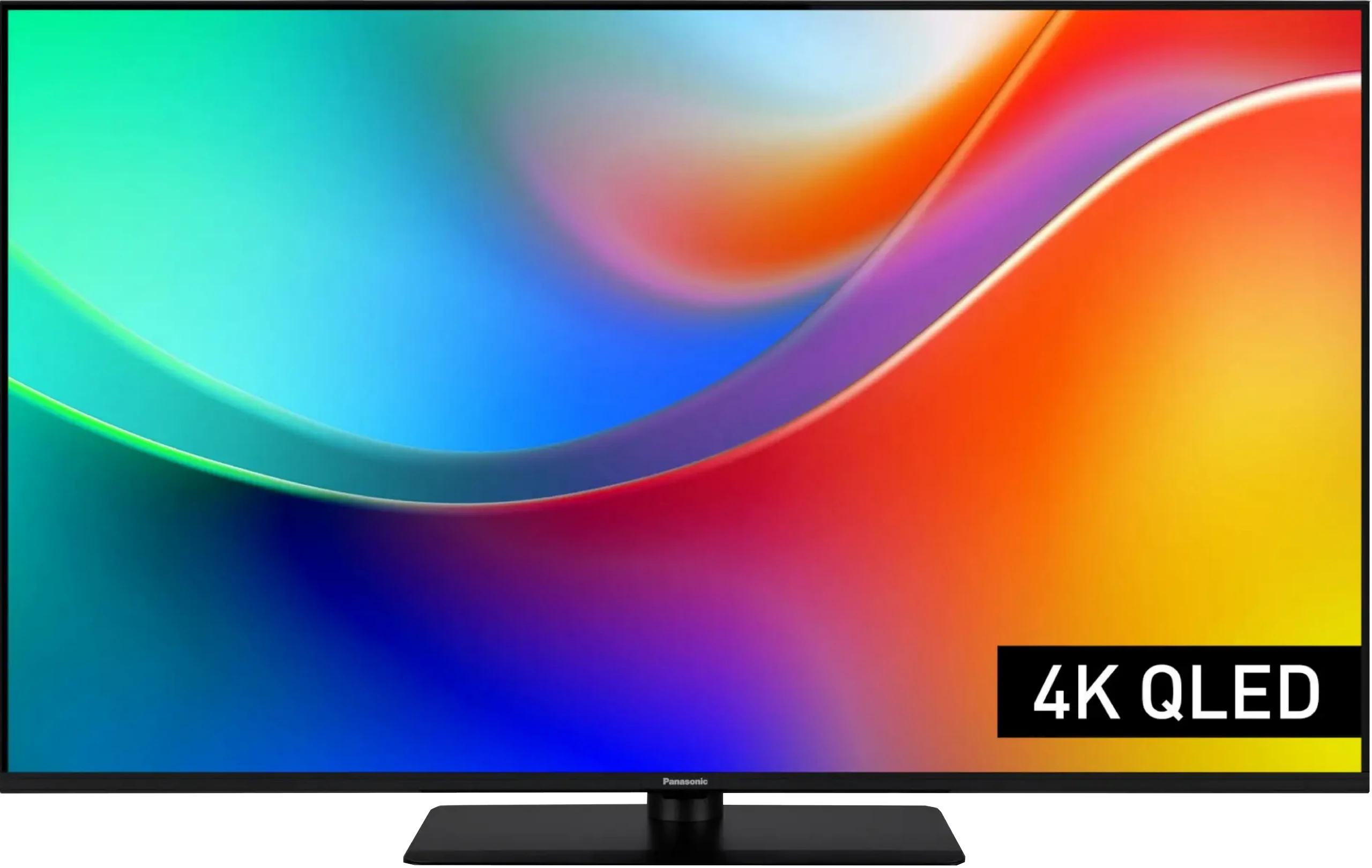
Panel type: LCD VA
Resolution: 3840x2160
System: Titan OS
Model year: 2024
Complete the survey to find out the result

Panel type: LCD VA
Resolution: 3840x2160
System: Amazon FireTV
Model year: 2025
Complete the survey to find out the result

Overall rating
6.8
6.1
Movies and series in UHD quality
6.5
5.5
Classic TV, YouTube
6.3
5.8
Sports broadcasts (TV and apps)
6.6
5.8
Gaming on console
8.5
7.7
TV as a computer monitor
8.6
8.6
Watching in bright light
6.1
4.2
Utility functions
6.1
6.8
Apps
6.2
7.6
Sound quality
6.7
5.8
Complete the survey to find out what fits your preferences
Advantages
Very good tonal quality of scenes exceeding the capabilities of the television
Well-functioning dynamic tone mapping feature
Colour reproduction after calibration
Functionality after connecting to console/PC
VA matrix with high native contrast
High refresh rate of 120/144 Hz
Two HDMI 2.1 ports with support for ALLM, VRR, and Dolby Vision in gaming
Very low input lag
Fairly good colour gamut coverage thanks to the QLED filter
Support for multiple HDR formats including Dolby Vision and HDR10+
Sturdy central stand
Great compatibility with PC – full chroma 4:4:4, clear fonts
Disadvantages
Significant halo/bloom effect
Poor viewing angles
The TitanOs system is not as developed as the competition
Average contrast and black levels
Low brightness (below 270 nits) – no real HDR
HDR mode in games is poorly refined, with incorrect HGiG implementation
Poor multimedia file player
The FireTV system in Europe is poorly refined: there are micro stutters and awkward translations, lacking many apps
Average sound quality, lacking depth
Motion smoother won’t work
Our verdict
The Panasonic W85B is a television that aims to prove that the Japanese brand can produce not only high-end devices but also something more "for the people." And indeed — on paper, it looks quite good: a VA panel with solid contrast, high refresh rates of 120/144 Hz, two full HDMI 2.1 ports, and low input lag. It sounds like an excellent set for a gamer or someone who simply wants a cheap television with good fundamentals. However, the reality is a bit more complicated. The W85B performs well primarily with SDR content, especially after calibration, and it will suit typical daily use. But when we start to demand more from it — e.g. expecting strong HDR effects or greater immersion in games with that mode enabled — the television quickly reveals its limitations. Its brightness is low, and the lack of local dimming is noticeably problematic during evening viewing. Therefore, we see the W85B more as a "daily" television — ideal for someone who watches terrestrial TV, YouTube, or streaming in SDR and wants to connect a console or PC at 120/144 Hz (but without HDR). In that role, it works very well. Is it a television for everyone? Definitely not. But if we accept its limitations and approach it without lofty expectations, the W85B can deliver quite a bit of enjoyment for relatively reasonable money.
TV appearance




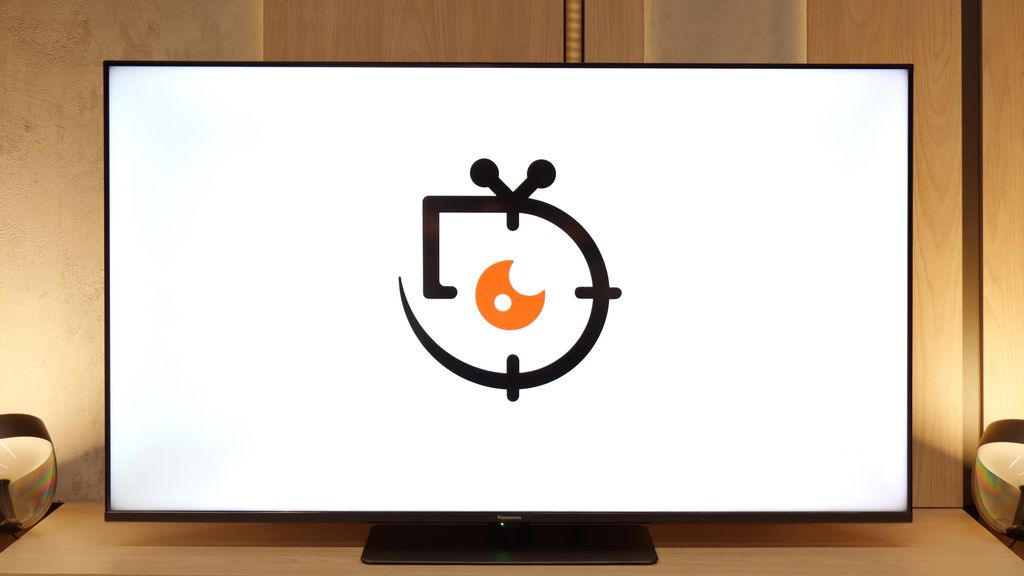
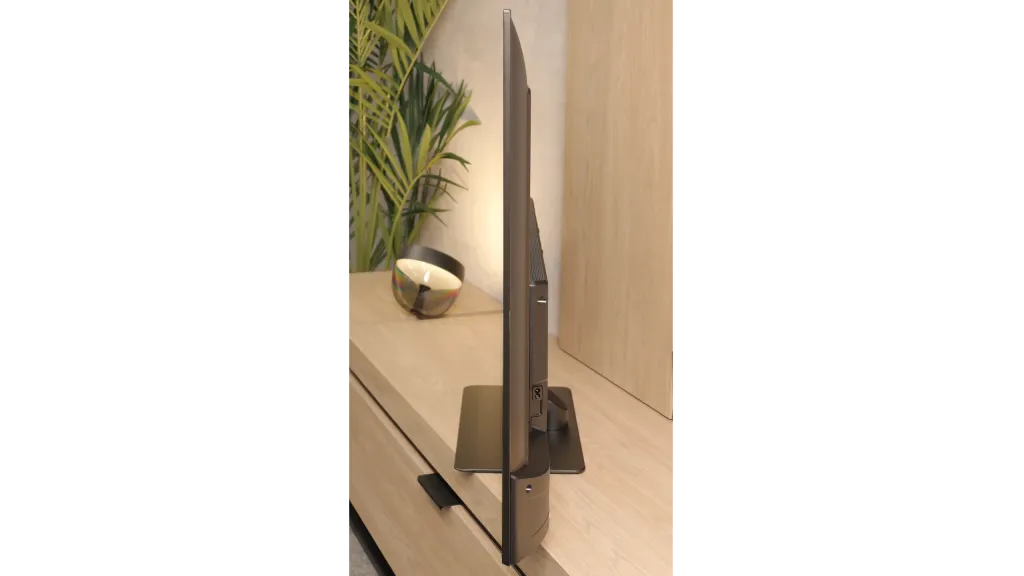
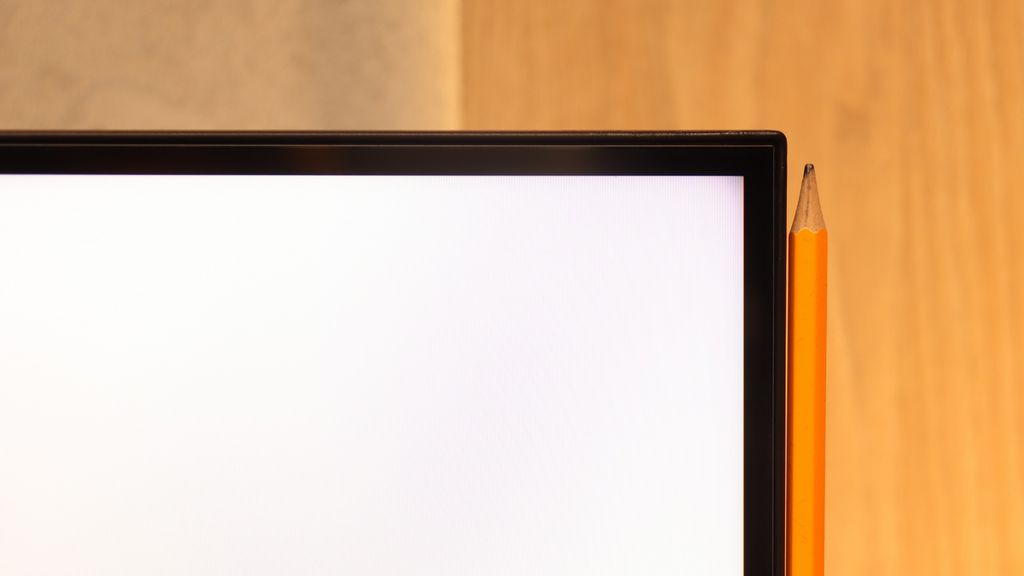
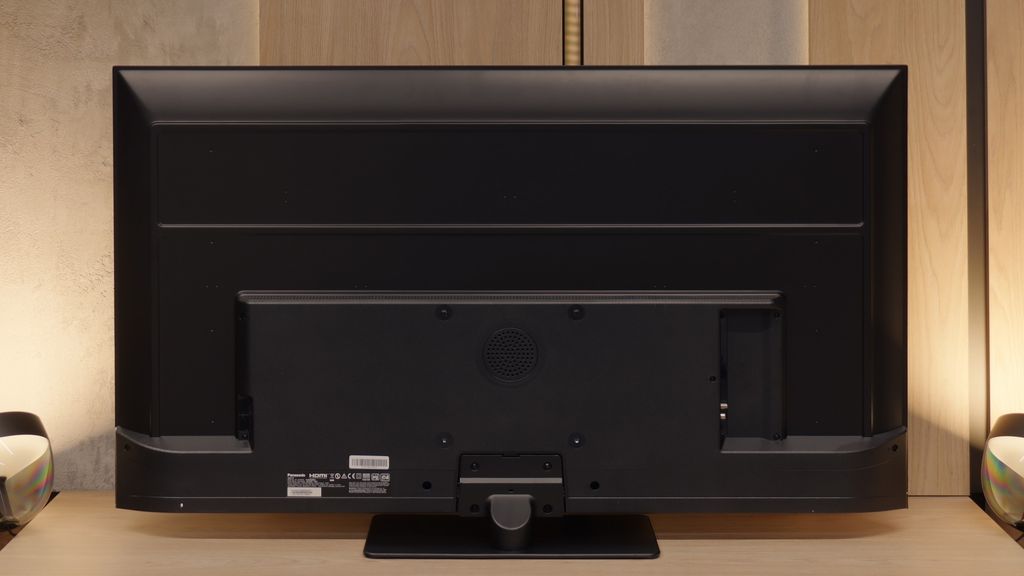
Contrast and black detail
6.6/10
5.3/10
Local dimming function: Yes, number of zones: 75 (15 x 5)
Local dimming function: No
Contrast:

Result
132,000:1

Result
16,550:1

Result
14,450:1

Result
7,850:1

Result
6,650:1

Result
4,300:1

Result
4,250:1

Result
4,200:1

Result
4,400:1

Result
3,150:1
Halo effect and black detail visibility:

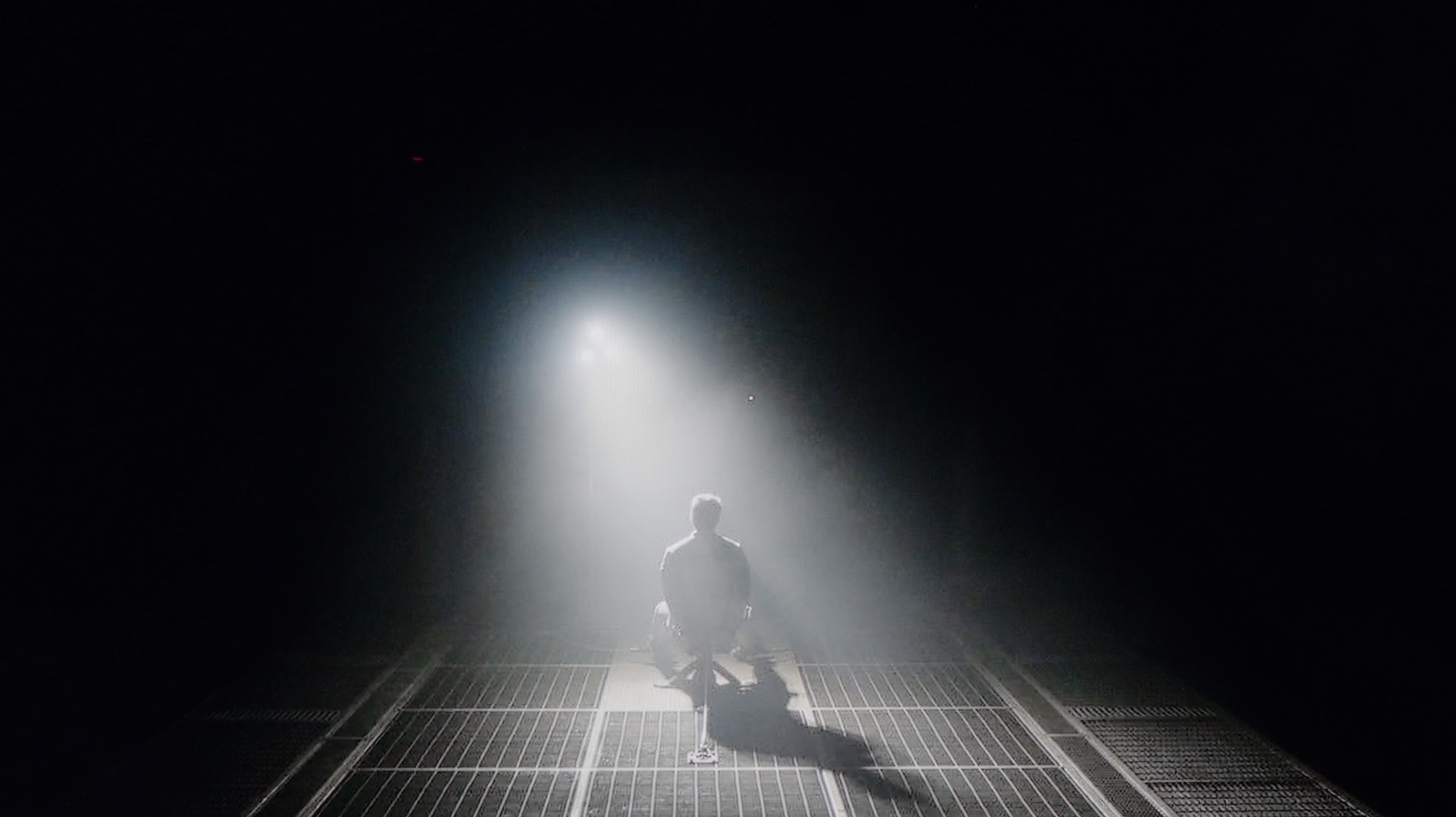
Philips PML9009 is equipped with a high-contrast VA panel. While it doesn’t deliver as deep and vivid an image as OLED televisions, it is still a much better solution for home cinema compared to IPS/ADS panels. The measured static contrast (without local dimming activated) of 6000:1 is considered very good and allows the Mini LED backlighting implemented in the tested television to shine. The results of the contrast and black measurement, as you can see for yourself, are not among the highest, and the only scene where the television exhibited satisfactory results was from the movie "Oblivion," where the unit deserves praise for its light separation, which is not such an obvious thing even in much more expensive models. We should also add that all tests were conducted at medium dimming power, as the lowest option provided unsatisfactory black levels, while the highest one lost significant detail. Unfortunately, our standard testing procedure with the film "Sicario 2" did not go as well as hoped. Yes, all the details in the second and third planes are very visible, but due to the operation of local dimming, the overall tonal balance was severely disrupted, not to mention the strong halo effect around the bright elements of the helicopter.
W85B is Panasonic's entry-level LCD, so you shouldn't expect miracles in this category, but… the VA panel really does a great job here. Its biggest advantage is simply better contrast than in popular IPS panels – there, blacks often look like grey, but here you can actually see deeper tones. In the scenes we tested, the contrast held around 4000:1, which translates to roughly four times better performance than in IPS displays. Of course, there's no local dimming, so in challenging conditions, when the room gets really dark, the blacks can resemble navy more than absolute pitch black. This is the difference you can see when comparing it to OLEDs or Mini-LEDs. But for everyday viewing – series, matches, evening movies in the living room – this contrast is more than sufficient. The image has the right depth, and the W85B does not give the feeling of a “washed-out” television.
HDR effect quality
6.1/10
4.2/10
Luminance measurements in HDR:

Result
548 nit

Result
550 nit

Result
824 nit

Result
491 nit

Result
582 nit

Result
228 nit

Result
249 nit

Result
283 nit

Result
282 nit

Result
297 nit
Scene from the movie “Pan” (about 2800 nits)


Scene from the movie “Billy Lynn” (about 1100 nits)


Static HDR10


Dynamic: Dolby Vision
Dynamic: Dolby Vision


HDR luminance chart:
Panasonic W85
HDR luminance
Philips PML9009 / 9019 / 9059
HDR luminance
Philips PML9009 doesn't really operate at the highest values in HDR materials. Most effects with brightness around 550 nits won't leave us thrilled with the lighting effects, although they are quite stable, which is a plus, and a considerable difference can be felt between SDR materials. It's worth noting that we can achieve a good result only in one scenario, that is in the film "Gemini," where the flashlight as the sole light source can really shine. Why in this scene? The answer is quite simple. The scene itself doesn't have a large amount of black, and the flashlight isn't as large an object as the sun in the first and last scenes. Overall, the brightness measurement results in HDR materials aren't a solid basis for recommending this television for viewing productions that use a wide color gamut. However, it's worth mentioning that this model can cover it in a not too bad 93% degree in the case of the DCI-P3 palette.
Unfortunately, we don't have good news here. The Panasonic W85B is quite a dark television – its peak brightness doesn't exceed 300 nits, making it hard to talk about any real HDR effect. In practice, this means that scenes which can 'shine' and impress on other screens simply look like regular SDR with a slight colour boost here. Our measurements and film tests confirmed this – regardless of the content, the W85B won't draw anything more from HDR. So if someone is looking for a television specifically for HDR, it's better to look at other models. On a positive note, the W85B does quite well in terms of colours. It's a QLED television, so its colour gamut coverage is wide, and most films and series look natural, without a noticeable 'faded' effect. The colours are saturated, so in everyday viewing, there's no feeling that something is seriously off.
Factory color reproduction
5.3/10
4.2/10


Factory Mode
After calibration


Factory Mode
After calibration
The best factory mode used during our tests was "Filmmaker". Here, we will examine both SDR and HDR content. The key differentiator is primarily the EOTF curve in the wide colour gamut materials and gamma in those recorded "the old way". Starting with SDR films and series and the most basic thing we can observe, which is white balance, we see a significant red colour dominance. This led to a yellow tint across the whole image, causing unnaturally looking faces and yellowed whites. This issue is also clearly visible on the "ColourChecker" palette, where all colours have shifted towards their warmer counterparts. Looking at an even more significant graph, the gamma responsible for the contrast of the image, we see considerable errors beginning right from the start. From the left, the value we measured, indicated by a combined ellipsis, clearly spiked upwards, causing complete merging of details in the darkest scenes. This state of affairs persisted up to 10% brightness on the screen, after which it dove below the reference orange line, leading to a deterioration in contrast, which, as we know, Philips PML9009 is already lacking. In HDR materials, white balance issues were very similar to those in SDR content. The discrepancy appears when checking the EOTF curve, which governs the rate of brightness increase and severely limited it, resulting in an unnaturally dark image. As for the colours themselves, there were more reasons for concern here, as the television's low luminance caused a huge disparity between the actual state and the correct one, which is perfectly visible on the error graph, often exceeding the scale.
Testing the Panasonic W85B, we obviously started with the Filmmaker mode, as it's the gold standard for watching content "the way the director intended." The problem is that this TV is quite far from those intentions. The biggest issue turned out to be an excess of red – both in SDR and HDR. The image often looked too warm because of this, and in some scenes, it was almost "on fire." Added to this is the issue of brightness management. When we looked at the gamma and EOTF charts, it was clear as day that in most scenes, the TV brightens the image more than it should. The effect was easy to predict. Details can get lost, leading to flattening and clipping across the entire screen. We obviously know how to fix this, but to be fair, it does require a lot of calibration work. Out of the box, the W85B doesn't produce an image close to reference quality – it's more of a TV that, without professional adjustments, will always interpret colours and brightness a bit "in its own way." Unfortunately, this is to the detriment of the viewer.
Color reproduction after calibration
7.5/10
6.9/10




Philips PML9009, like most leading manufacturers, has been providing advanced tools for calibration processes for years. Here we find 2-point and 20-point greyscale adjustments, as well as an advanced CMS (Color Management System). The differences resulting from calibration are evident, and even someone who doesn't pay attention to image quality (although there probably aren't many like that here) will notice the positive difference. Both SDR and HDR materials have undergone quite a transformation. The former and the latter have primarily shed the ugly yellow tint resulting from the red colour dominance in white balance. As for the SDR materials and gamma, although it is not perfectly modelled and still loses dark details, the rest of it is at more than a decent level, and minor errors will not be noticeable. The colours themselves look far better, and with low deltaE errors, they are almost reference-quality. On the other hand, HDR materials, due to the unit's low luminance, have not been optimised as we would have liked. Although the white balance has been largely normalised, a slight blue tint can still be observed here and there. Fortunately, the EOTF curve turned out to be much more accessible, allowing for practically perfect geometry. Unfortunately, due to the screen's too low brightness, the colour errors remain quite high.
Fortunately, calibration made a significant difference for the Panasonic W85B, especially for SDR content. Here, the improvement was quite evident – we managed to even out the white balance and reasonably tame the TV's tendency to overly brighten the entire image. The picture became more coherent and the colours gained the naturalness that was lacking in the factory settings. Admittedly, the results from the Color Checker are not perfect, as the W85B has noticeable issues with green saturation, but overall, we rate the post-calibration effect in SDR quite positively. The situation with HDR is a bit different. Here too, we managed to reduce the tendency to warm up the entire scene, so the image performed definitely better than in the factory settings. However, there is still the same problem we mentioned earlier – the TV interprets the image too strongly "in its own way" and brightens the whole screen. And the lack of local dimming only exacerbates this effect. In summary, briefly, in SDR content, the W85B performs really well after calibration and is perfectly suitable for everyday viewing. However, in HDR, even after adjustments, it is still difficult to unambiguously recommend it for more serious viewing.
Smoothness of tonal transitions
7/10
9.1/10












There’s no doubt many of you have watched a movie or series where you noticed transitions that should be a smooth blend between colours. That’s why during our tests we also pay attention to tonal transitions. Philips PML9009 performed quite well in this area with each of the scenes we prepared, and while there are certain elements here and there that could have been processed better, it’s still good overall. It’s particularly worth noting the scene from "The Green Knight," which is definitely the most challenging. For the tested television, it wasn’t a "killer" and there are no significant unwanted stutters visible in it.
Here we can calmly praise the Panasonic W85B. The TV handles colour blending and tonal transitions remarkably well. Gradients appear smooth, without visible banding or artificial contours. As a result, the image gains a sense of naturalness, and sequences with a lot of subtle shades – like the sky or blurred backgrounds – look exceptionally good for this class of equipment.
Image scaling and smoothness of tonal transitions
7.2/10
6/10
Smooth transition function

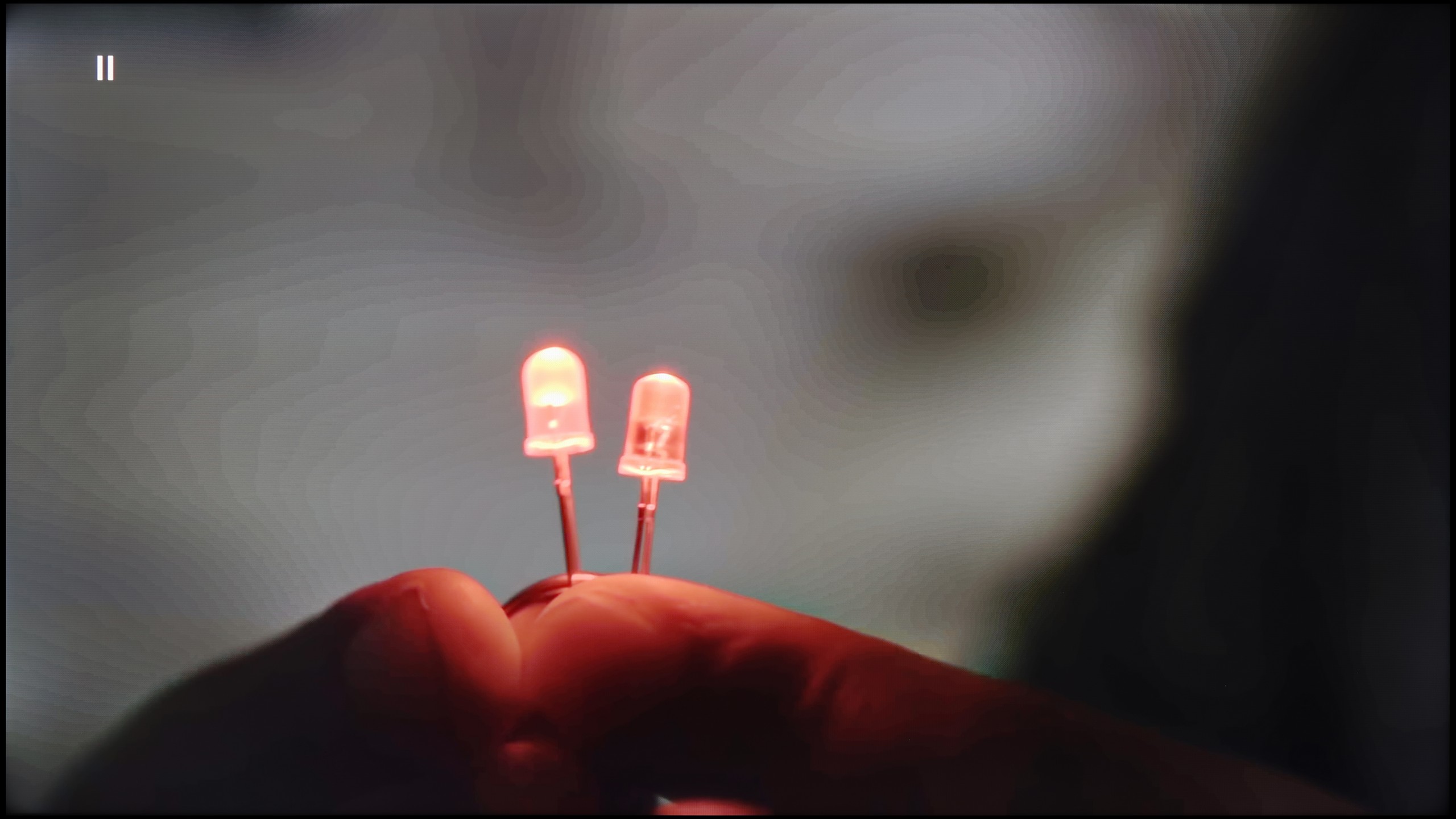
Image without overscan on the SD signal


Judging by how PML9009 Philips handled tonal transitions, the image scaling test should perform just as well. This time, we are checking the TV’s algorithms responsible for enhancing the quality of images that were recorded in lower quality. Such images can be found, for example, in various TV shows or older films. In this regard, Philips PML9009 performs quite mediocrely and drastically blurs the image. This is particularly noticeable on fine branches or the model's hair.
Let’s revisit the issue of tonal transitions, which performed remarkably well. Within the unit, we will find several levels of smoothing. Even the lowest one can effectively eliminate any jerky tonal transitions and will be suitable for the vast majority of materials. More importantly, none of the settings for this function soften the effect of film grain, which is extremely important in terms of alignment with the director's vision. However, we would like to point out that sometimes it may turn out that fine details are blurred.
With native SDR content, the Panasonic W85B performs very well – tonal transitions are smooth and natural, without artificial bands or clear outlines. However, the situation is worse with lower resolution materials. This is where the TV has the biggest problem with "beautifying" the image. The lack of any menu option to improve gradation means that with older films or materials from YouTube, one can sometimes notice slight issues with colour blending.
Fortunately, upscaling, or enhancing the quality of lower resolution content, performs much better. This is definitely a strong point of this model – the image is scaled cleanly and in detail, and the TV handles this better than one might expect from such an inexpensive setup. This is thanks to the HCX processor, which Panasonic has been developing for years, and it shows that even in the lower series, it can do a good job.
Blur and motion smoothness
7.7/10
6.5/10

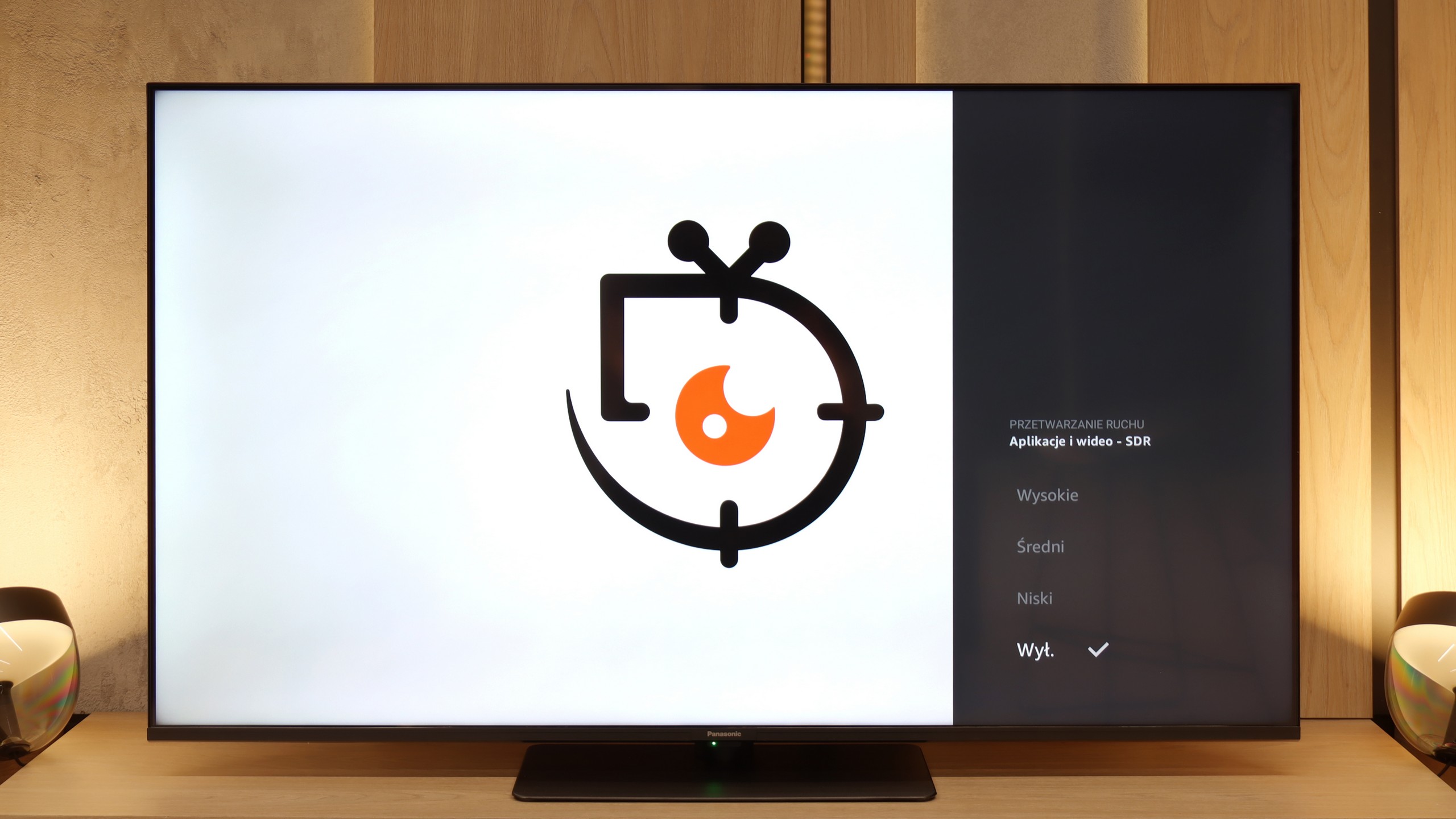
Blur (native resolution, maximum refresh rate):






Smużenie ():
Smużenie (4K@144Hz):



Philips PML9009 has been equipped with a panel that has a native refresh rate of 120 Hz. This is the essential minimum for watching all kinds of sports and is recommended for comfortable gaming in favourite titles on consoles or PCs. The manufacturer, for those who dislike the characteristic judder of footage recorded at 24 fps or those requiring a high degree of motion smoothness, such as when watching football matches, has prepared an effective system for improving the sharpness of moving images. In the dedicated tab, we will find a "Smoothness" slider responsible for eliminating judder and a "Motion Blur Reduction" setting that helps to increase the sharpness of dynamic elements. The function works very well and granularly, meaning each setting has a real impact on motion perception. With such a set, every user will find their sweet spot. In the picture, we present our choice, which is slight smoothing without the soap opera effect.
A matter directly related to motion is the response time of the pixels in the panel itself. The best in this regard are of course OLED panels, followed by units based on IPS and ADS screens, and lastly VA. Despite the generally good quality of the systems responsible for smoothening the image, the use of a VA panel carries consequences in the form of black smear behind fast-moving objects. Although in the tested television this should not occur frequently, it will be noticeable here and there.
At first glance, everything looks good – the Panasonic W85B has a 120 Hz panel and even a 144 Hz mode, so it seems like it should handle smooth motion really well. The problem starts when we delve into the settings. The options for improving fluidity are supposedly present in the menu, but in practice… they don't change anything. No matter what we choose, the image looks the same. On top of that, there’s a lack of BFI, or black frame insertion, which in many TVs helps sharpen motion. And suddenly, it turns out that despite the strong panel, the W85B doesn’t give us any real tools to adjust that motion to our needs. It’s only good when the source itself operates at a higher frequency – for example, games at 120 Hz. But when it comes to movies or sports, we just have to accept what the TV shows us because there’s nothing more that can be done about it.
Console compatibility and gaming features
9.8/10
8.5/10
- ALLM
- VRR
- VRR range48 - 144Hz48 - 144Hz
- Dolby Vision Game Mode
- Correct implementation of HGIG
- 1080p@120Hz
- 1440p@120Hz
- 4K@120Hz
- Game bar

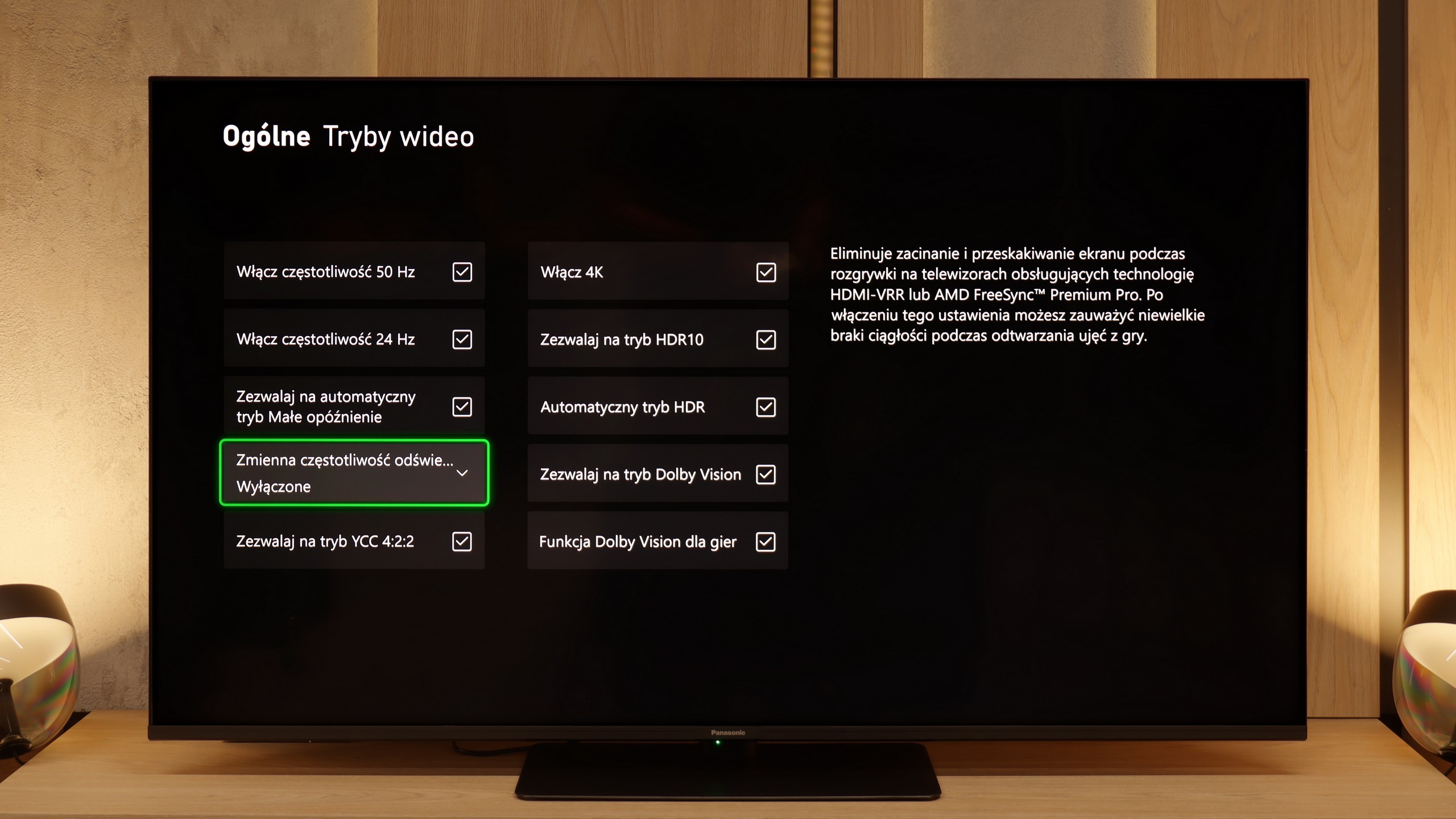

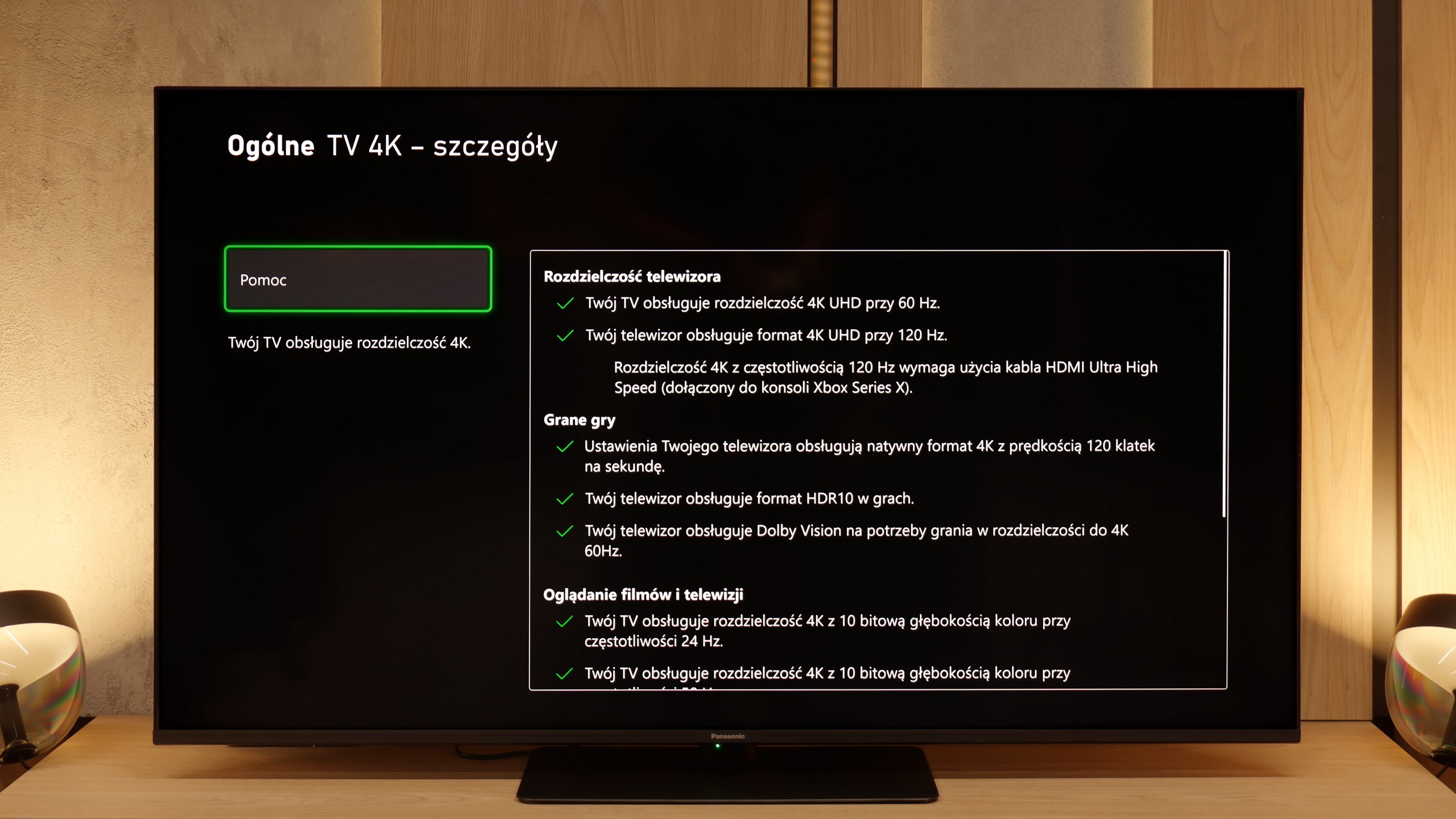

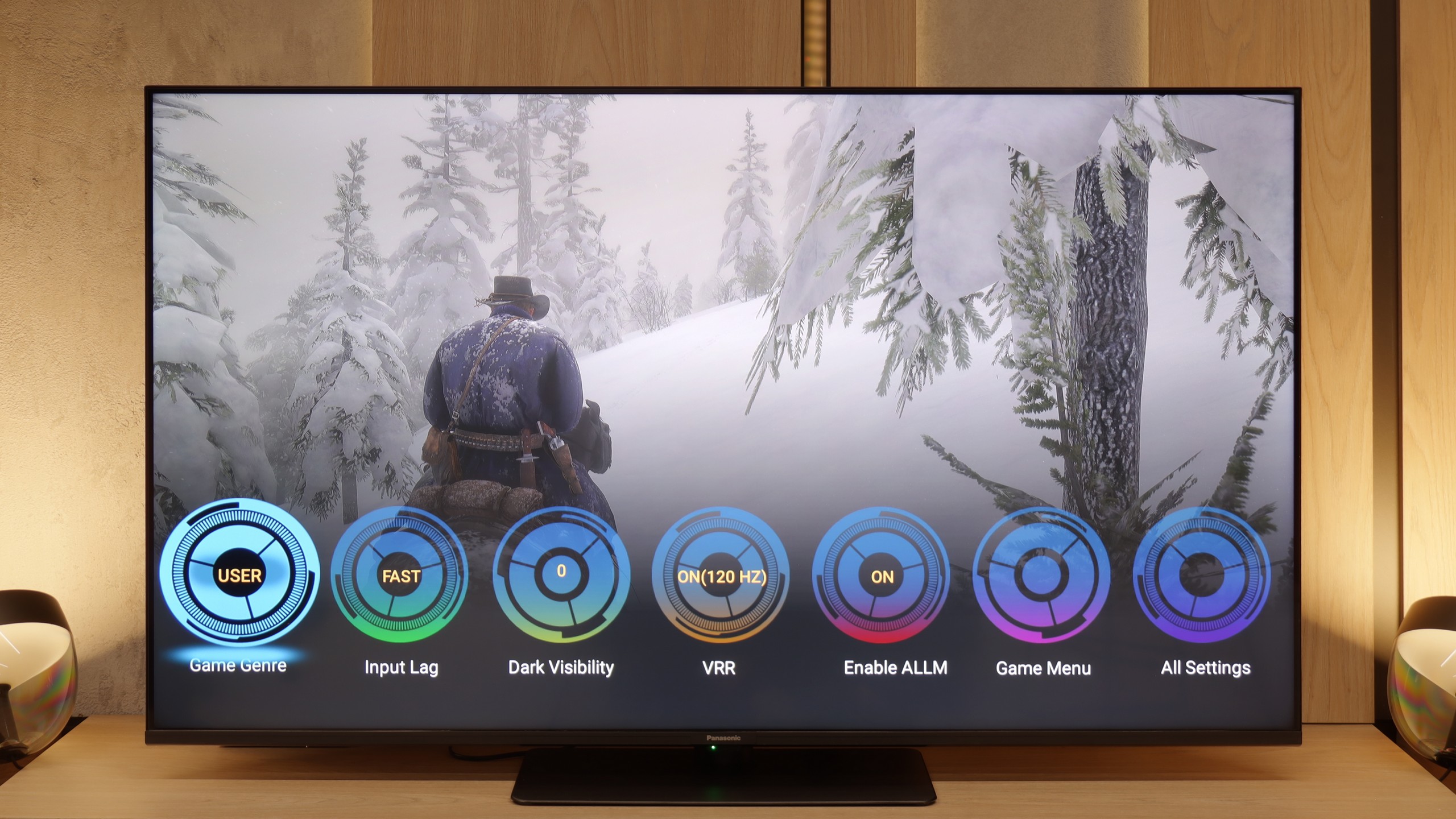

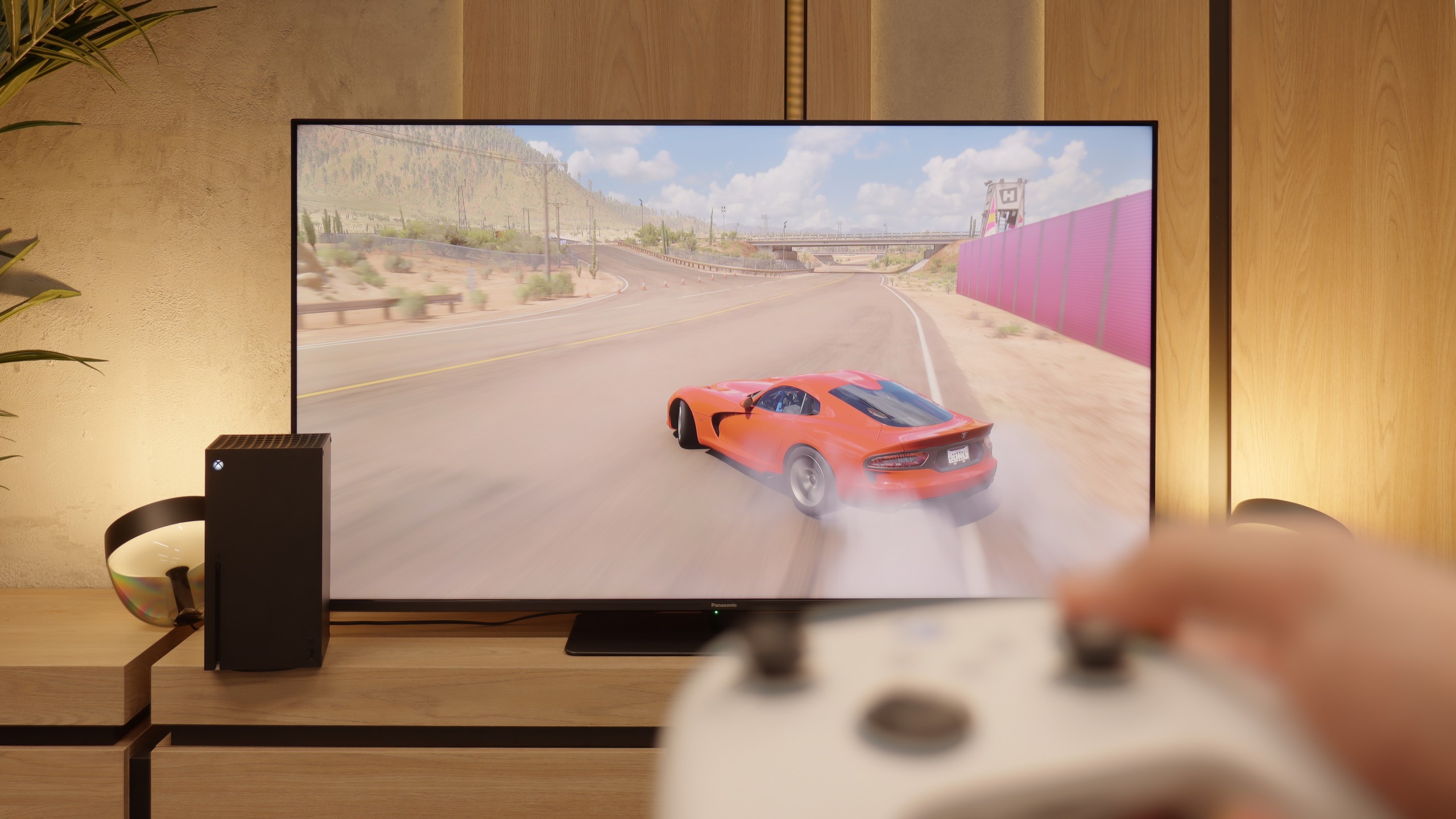
Philips PML9009, equipped with HDMI 2.1 connections with full bandwidth, supports all functions dedicated to gamers. The most basic ones, such as VRR and ALLM, are a given, but G-Sync, FreeSync, or playing in HDR Dolby Vision with low input lag are not. These features activate without any problems, and during the tests conducted, they presented no obstacles. Such preparation of the television is certainly its strong point, and it can be said that it is a unit dedicated to gamers. For more advanced users, we also mention that the PML9009 is equipped with the HGIG mode, which will be particularly felt by gamers, as there are still relatively few games that support Dolby Vision. This mode primarily allows for the adjustment of HDR effects to the capabilities of the television on a special board, to prevent dimming and burning of the image.
The television additionally implements a special menu - GameBar. This allows for editing unit settings "on the fly," meaning without having to exit the game. In it, we will also find functions such as activating a crosshair or black level correction for better visibility of opponents in shadows.
In a brief summary of this paragraph, the Philips PML9009 is a unit that will undoubtedly attract gamers' attention. Thanks to its versatility, it will allow for playing any title in the highest quality without compromises. Especially since features such as VRR, ALLM, G-Sync, FreeSync, or gameplay in HDR Dolby Vision will provide an even greater immersion in the favourite title.
On paper, the Panasonic W85B looks really solid. It has two full HDMI 2.1 ports, support for ALLM, variable refresh rates, Dolby Vision in games, and of course, a high refresh rate for the panel itself. Additionally, there's the characteristic Panasonic game bar, which allows you to view key parameters with a single click and quickly change them if needed. It sounds great, but the problem arises when we enable HDR. Here, the W85B really struggles because the implementation of HGiG is practically nonexistent – the TV poorly manages brightness, and instead of faithful images, we get scenes that are too bright, sometimes even blown out. The solution? The simplest one – turn off HDR in the console settings and keep everything in SDR. And here it gets really interesting, because in this scenario, the W85B shows its better side. Low input lag, high smoothness thanks to 120 Hz – all of this makes gaming look phenomenal. Yes, HDR can be skipped, but if responsiveness and smooth gameplay are the priorities, the W85B provides plenty of fun.
Input lag
9.6/10
9.8/10
SDR
HDR
Dolby Vision
The results of input lag measurements in Philips PML9009 are impressive, regardless of the signal or resolution. All gamers will certainly appreciate the efforts of the manufacturer, which have led to a game running at 4K120Hz with HDR having only 8 ms of delay, which is practically undetectable even in online games. One should also not forget about the proper implementation of game mode with Dolby Vision, which can be praised for a similar response time of 16 ms.
There’s really nothing to worry about here. The Panasonic W85B reacts instantly to our movements, and the values measured in tests can easily compete with gaming monitors. At a 120 Hz signal, the input lag is around 8–10 ms, and at 60 Hz it hovers around 17–20 ms. In practice, this means one thing – no delays, no frustration! You press the button, and the action happens immediately on the screen.
Compatibility with PC
8.6/10
8.6/10

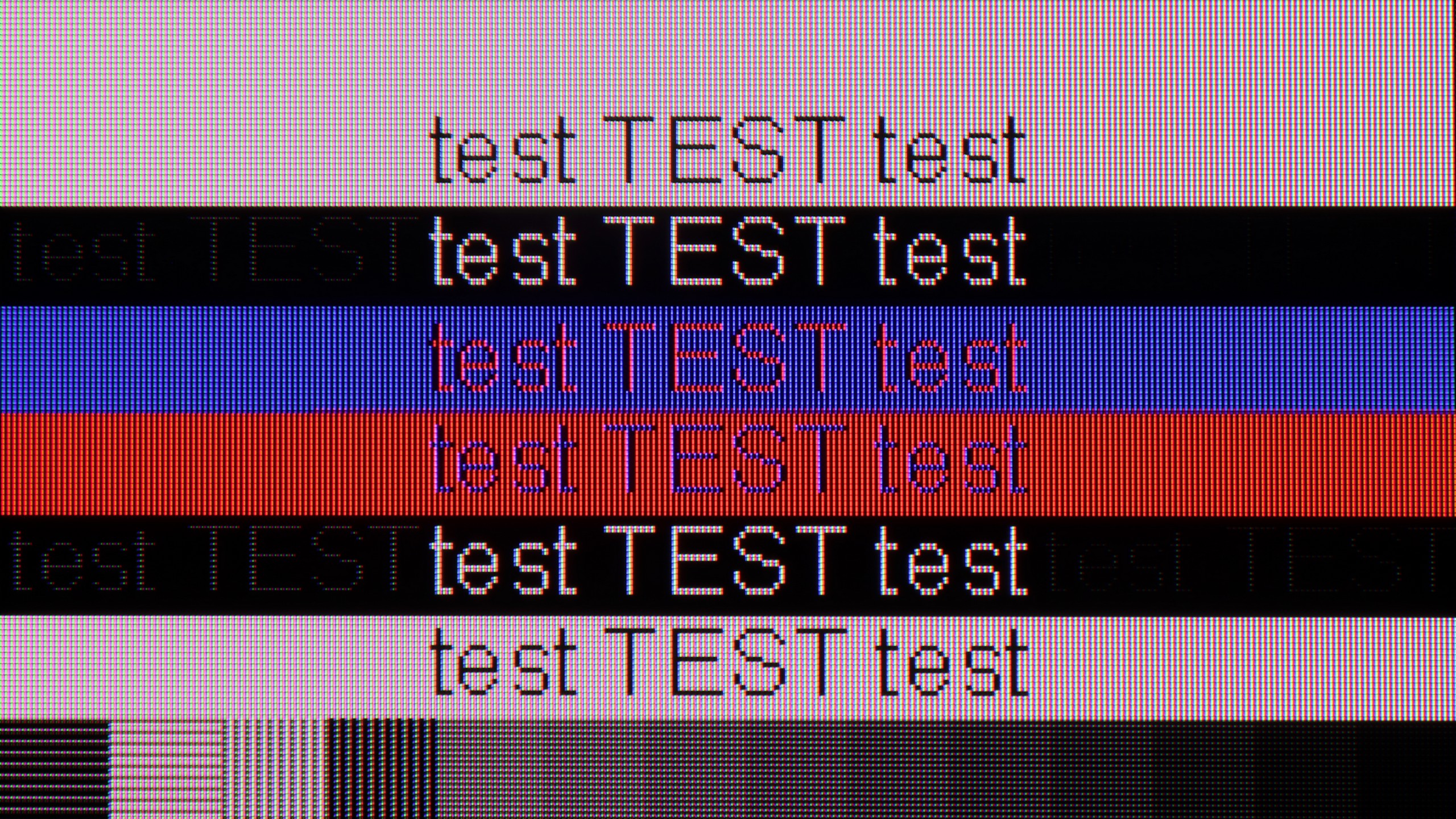
Just like in games, the tested Philips PML9009 performs excellently in everyday use as well. Measured latencies of 8 ms allow for virtually instantaneous response between the mouse, screen, and eye. The correct implementation of chroma 4:4:4 enables working with text without any problems thanks to sharp fonts. The subpixel arrangement of the matrix is BGR, although this does not cause any discomfort when working on the Windows system. It may be different with other systems that may not be able to correctly convert text.
The Panasonic W85B performs surprisingly well as a computer monitor. It is perfect for office work – the fonts are sharp and very readable thanks to full 4:4:4 chroma support, so writing, browsing the web, or working on spreadsheets is a breeze. But the real "fun" starts when gaming. The TV handles up to 144 Hz refresh rates for PC effortlessly, and it supports popular image synchronisation technologies like NVIDIA G-Sync and AMD FreeSync. This means we don't have to worry about screen tearing or micro-stuttering – gameplay is smooth and looks simply fantastic.
Viewing angles
2.6/10
3.2/10
A commonly known drawback of VA panels that do not have an angle coating is their poor viewing angles. This time is no different. Even after a small shift off-axis, the image becomes washed out, and the colours undergo significant degradation.
Here you can see the biggest price we pay for the high quality of the VA matrix contrast. The W85B, like most TVs with this type of panel, doesn't perform well when viewed at wider angles. Colours lose intensity and the image begins to fade as soon as you move away from the screen's axis. This is not a flaw of Panasonic itself, but rather a characteristic of VA technology – great contrast in exchange for poorer viewing angles. So, if you plan to watch movies with a larger group and often sit "off to the side", it's something to keep in mind.
TV efficiency during daytime
6.1/10
4.2/10

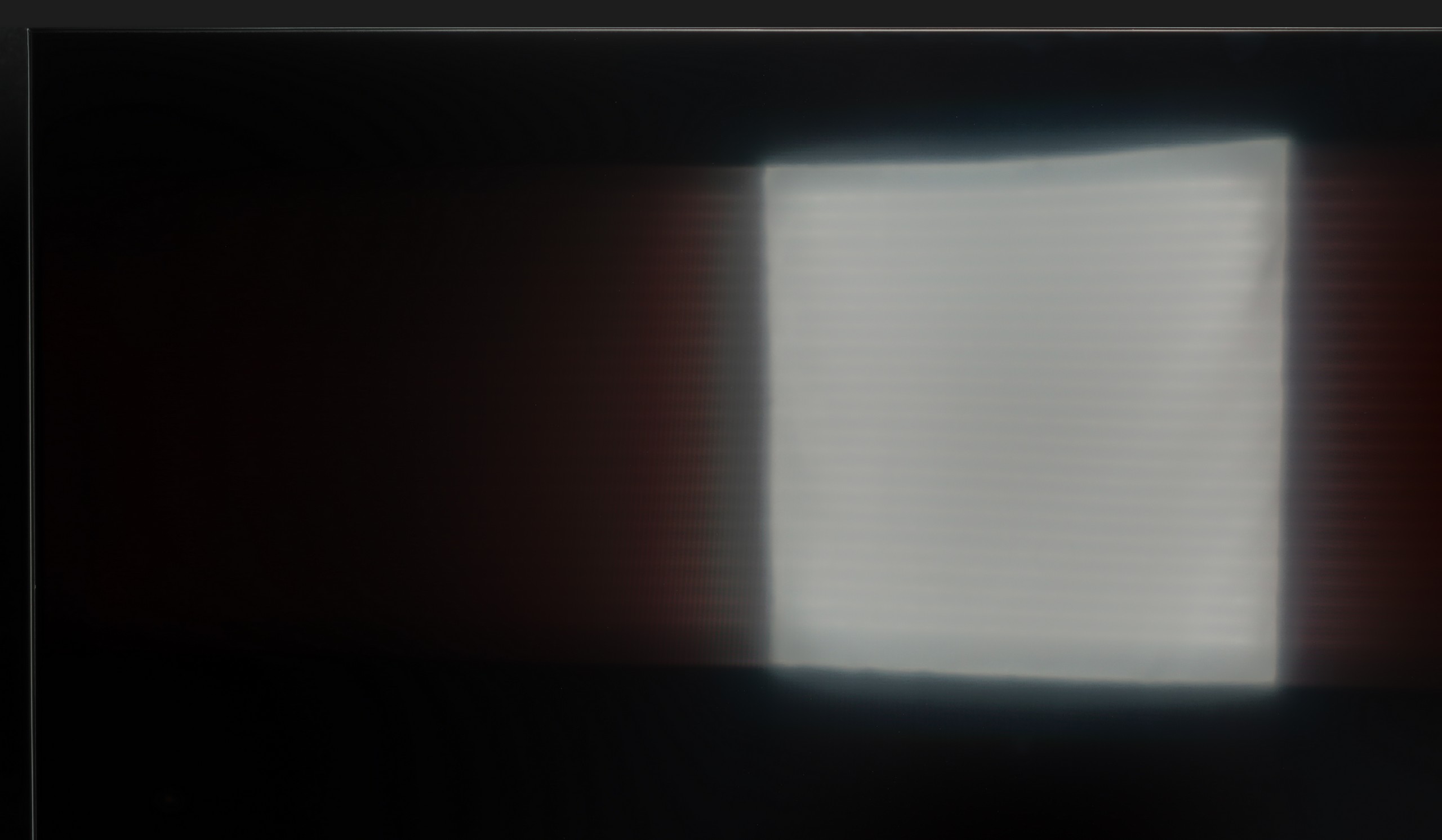


Matrix brightness
Average luminance SDR
Panasonic W85: 263 cd/m2
Philips PML9009 / 9019 / 9059: 564 cd/m2
As far as the brightness of the TV itself in SDR content is good (let's face it, we watch movies in the evening or in the dark), the reflection suppression is at a rather average level. This is due to the satin finish of the panel, which is quite susceptible to all light sources and neither absorbs nor disperses them. However, it's worth noting that due to the quite high brightness in SDR content, the TV will overall perform fairly well in bright rooms, and certainly better than a large portion of OLED TVs.
The Panasonic W85B features a satin-finished panel that does quite well in reducing reflections and maintaining colours even in bright light coming from windows or lamps. There’s no ‘mirror’ effect here, so in a typical lounge during the day, watching TV is comfortable. However, the problem arises when you’re in really bright rooms – the TV doesn’t have high brightness, so it won’t cut through very strong sunlight. It’s simply a screen that performs best in controlled conditions.
Details about the matrix
Subpixel Structure:

Panel uniformity and thermal imaging:

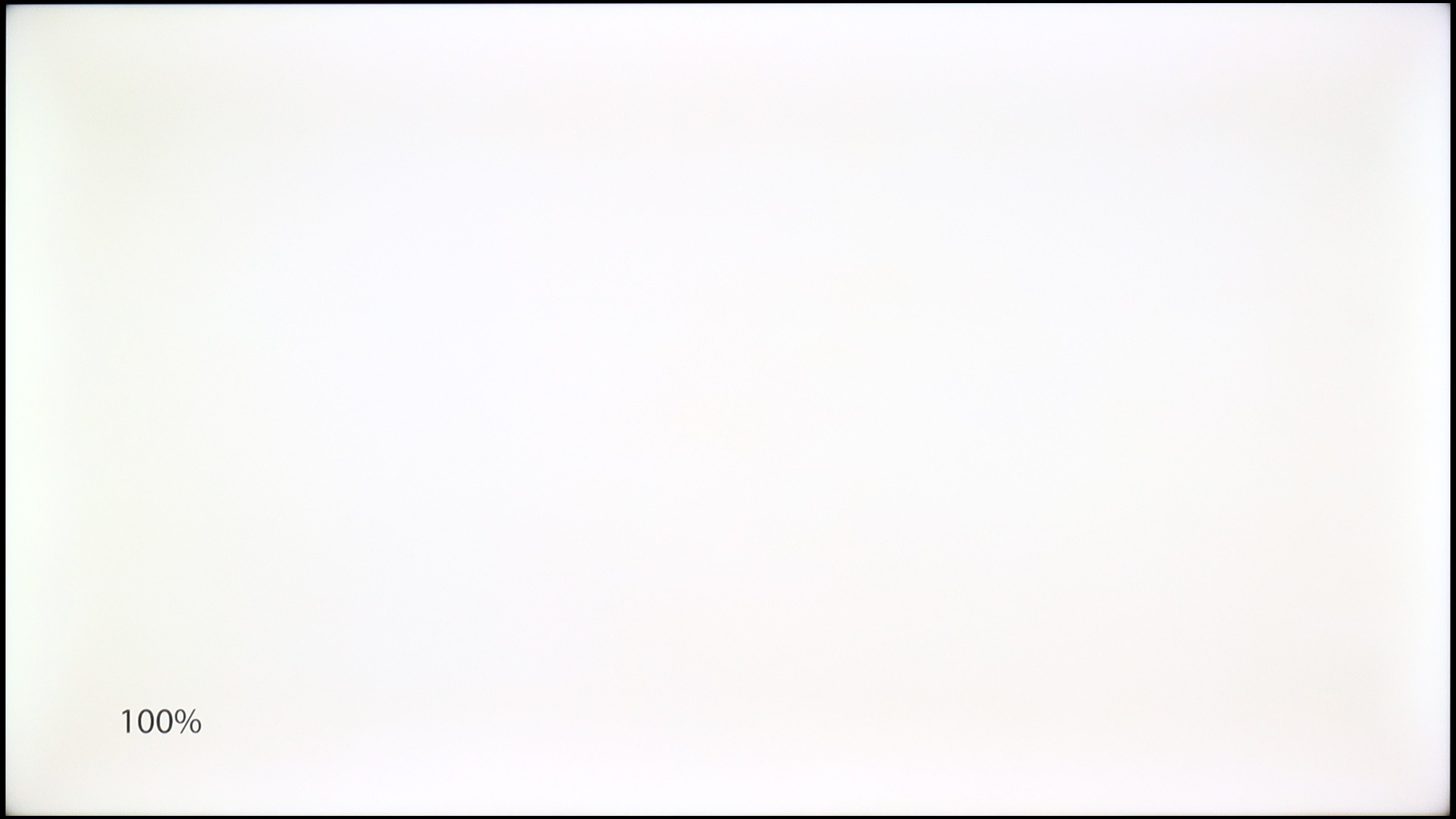
Philips PML9009 / 9019 / 9059
Panasonic W85
TV features
6.1/10
6.8/10
- HDMI inputs0 x HDMI 2.0, 4 x HDMI 2.1 48Gbps1 x HDMI 2.0, 2 x HDMI 2.1 48Gbps
- OutputsToslink (Optical audio), eARC (HDMI), ARC (HDMI), Mini-Jack (Headphones)Toslink (Optical audio), eARC (HDMI), ARC (HDMI), Mini-Jack (Headphones)
- Network InterfacesWi-Fi 2.4GHz, Wi-Fi 5GHz, Ethernet (LAN) 100MbpsWi-Fi 2.4GHz, Wi-Fi 5GHz, Ethernet (LAN) 100Mbps
- TV receptionDVB-T, DVB-T2, DVB-S, DVB-S2, DVB-CDVB-T, DVB-T2, DVB-S, DVB-S2
Classic features:
- Recording to USB (terrestrial TV)
- Recording programming
- Picture in Picture (PiP)
- RF remote control (no need to aim at the screen)
- Backlit remote control
- Teletext
- Audio only mode
- Bluetooth headphones support
- Simultaneous Bluetooth headphones & TV audio
Smart features:
- AirPlay
- Screen mirroring (Windows Miracast)
- Voice search
- Voice search in native language
- Ability to connect a keyboard and mouse



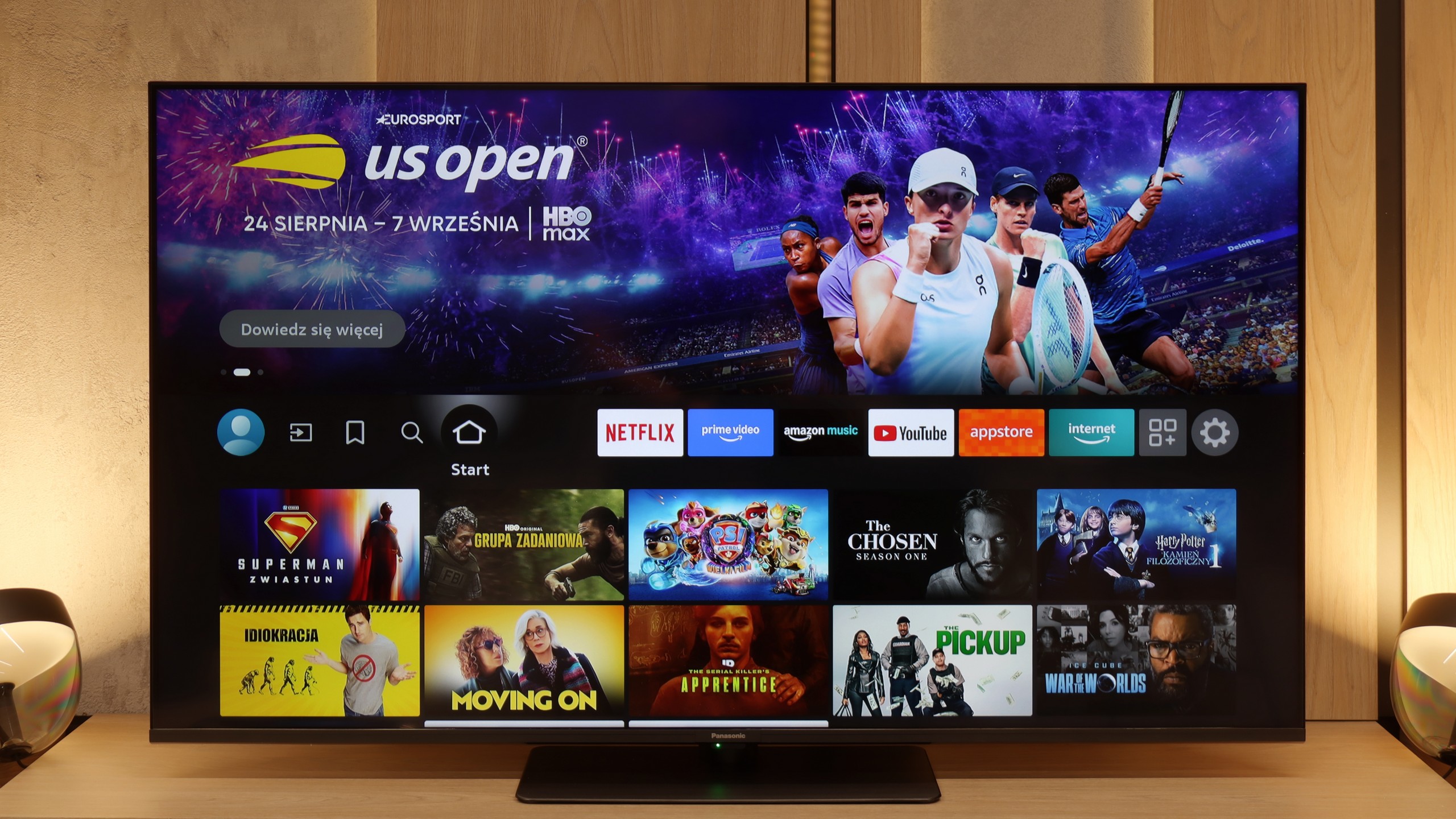
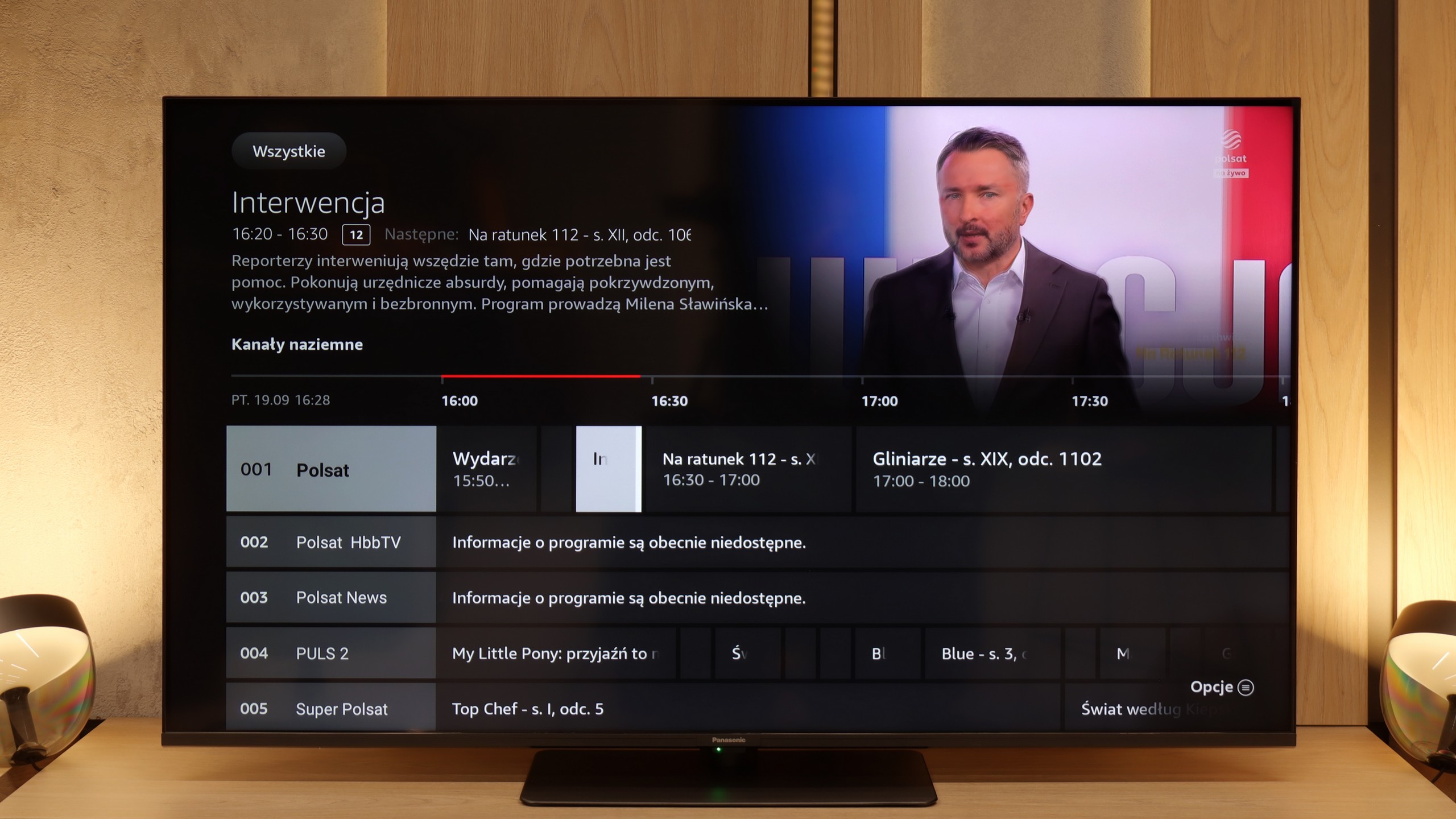
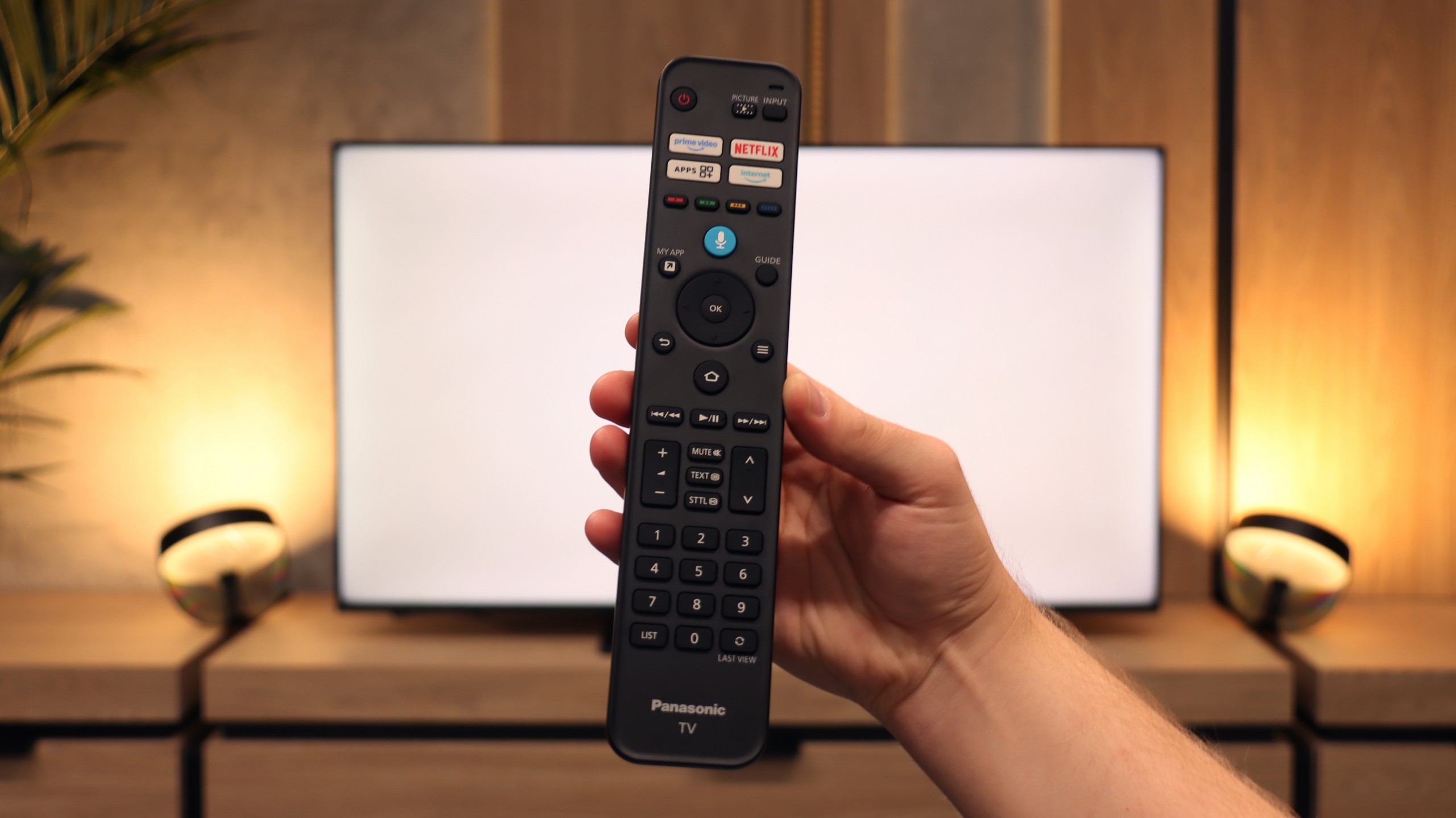
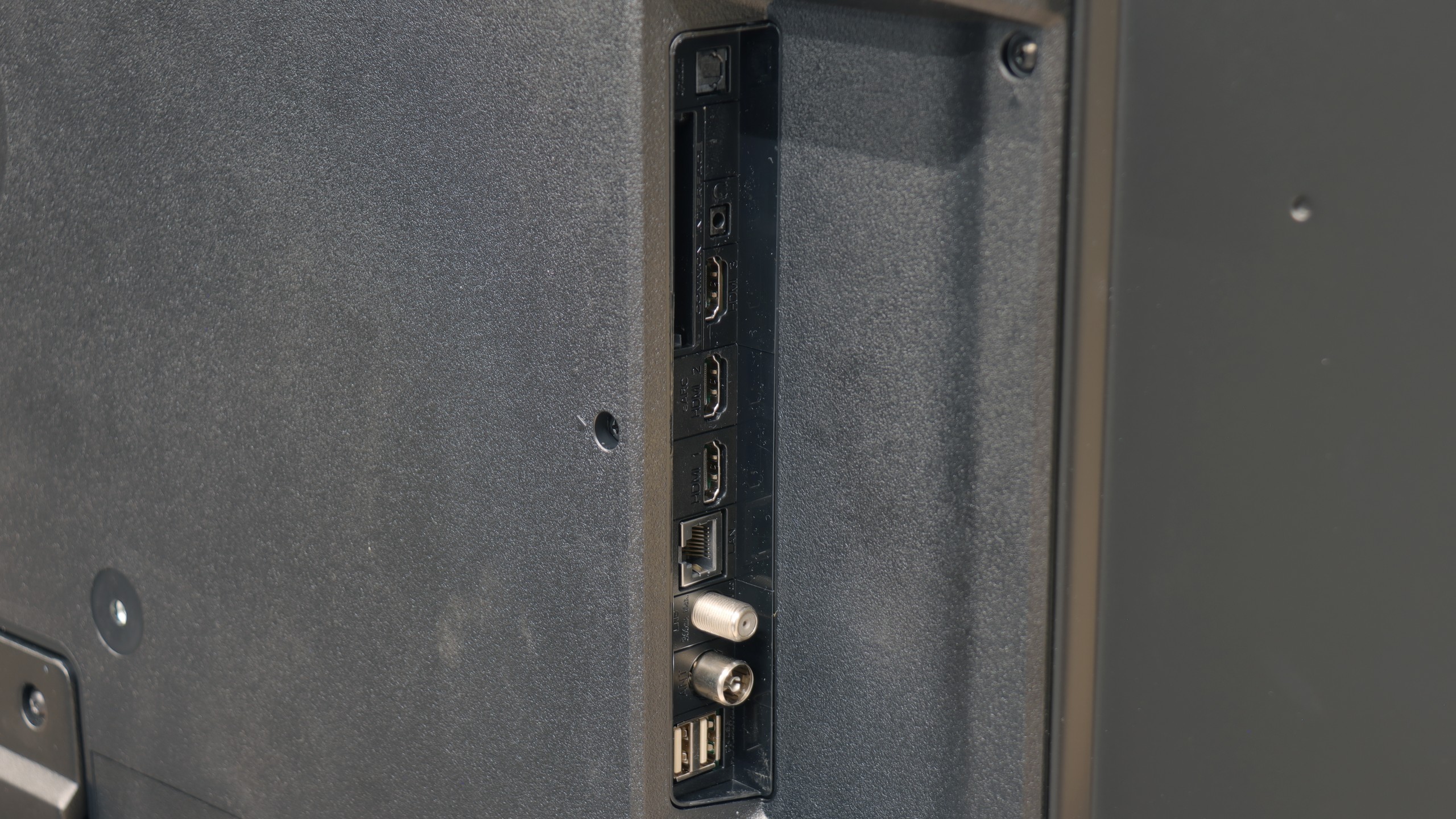
Before we dive into the software that controls the television, it's impossible not to mention the biggest standout feature of the manufacturer's TVs. We're talking, of course, about the multicoloured Ambilight backlighting, which is placed on the back of the device and displays colours that adapt to what's happening on the screen, often allowing for an even greater immersion experience. The operating system responsible for the TV's functioning is Philips' proprietary system, charmingly named TitanOs. It is definitely more closed off and limited in terms of application resources compared to other TVs from the manufacturer that use GoogleTV. Besides the lack of essential applications, its closed nature also reveals itself in another way. We won't be able to perform such basic tasks as programming recordings or recording to USB. People using Apple devices may also feel disappointed by the lack of the AirPlay function, which allows for easy screen streaming. Fortunately, there is the option to connect a keyboard and mouse for more efficient navigation through the TV's menu. It's also worth mentioning that while the remote pairs via BT, it only works for voice selection in English. The rest operates via IR...
In summary: TitanOs has quite a few "buts," especially for those of us who are aware users needing and using multiple streaming platforms. It's more of an option for those limiting themselves to the so-called holy trinity: Netflix, YouTube, and CDA.
SmartTV: FireTV
The W85B runs on the Fire TV system and it must be said – it’s a significant step forward compared to Panasonic's previous proprietary solutions. We have support for AirPlay, screen mirroring, and even voice control via Alexa. It sounds modern and, in practice, it actually offers quite a lot of possibilities. The problem is that in Europe Fire TV still looks a bit like a “guest with luggage.” It works decently, but there are occasional micro-stutters, the interface doesn’t always respond as smoothly as we would like, and the menu can have awkward translations. It’s not yet at the level of the biggest players like Google TV or even Tizen, but it's still an improvement over what Panasonic had before. The worst part of it all is that the Fire TV app library is quite modest, and that is its biggest drawback.
Classic TV Functions
In terms of typical TV features, it’s quite good – we have a classic remote with a full numeric keypad, a clear EPG guide, and the ability to record programs from the built-in tuner onto an external USB drive (e.g. a flash drive). The downside is the lack of an option to schedule recordings in advance – you can record “here and now,” but can't set recordings for later.
Playing files from USB
8.2/10
3.1/10
Supported photo formats:
Maximum photo resolution:

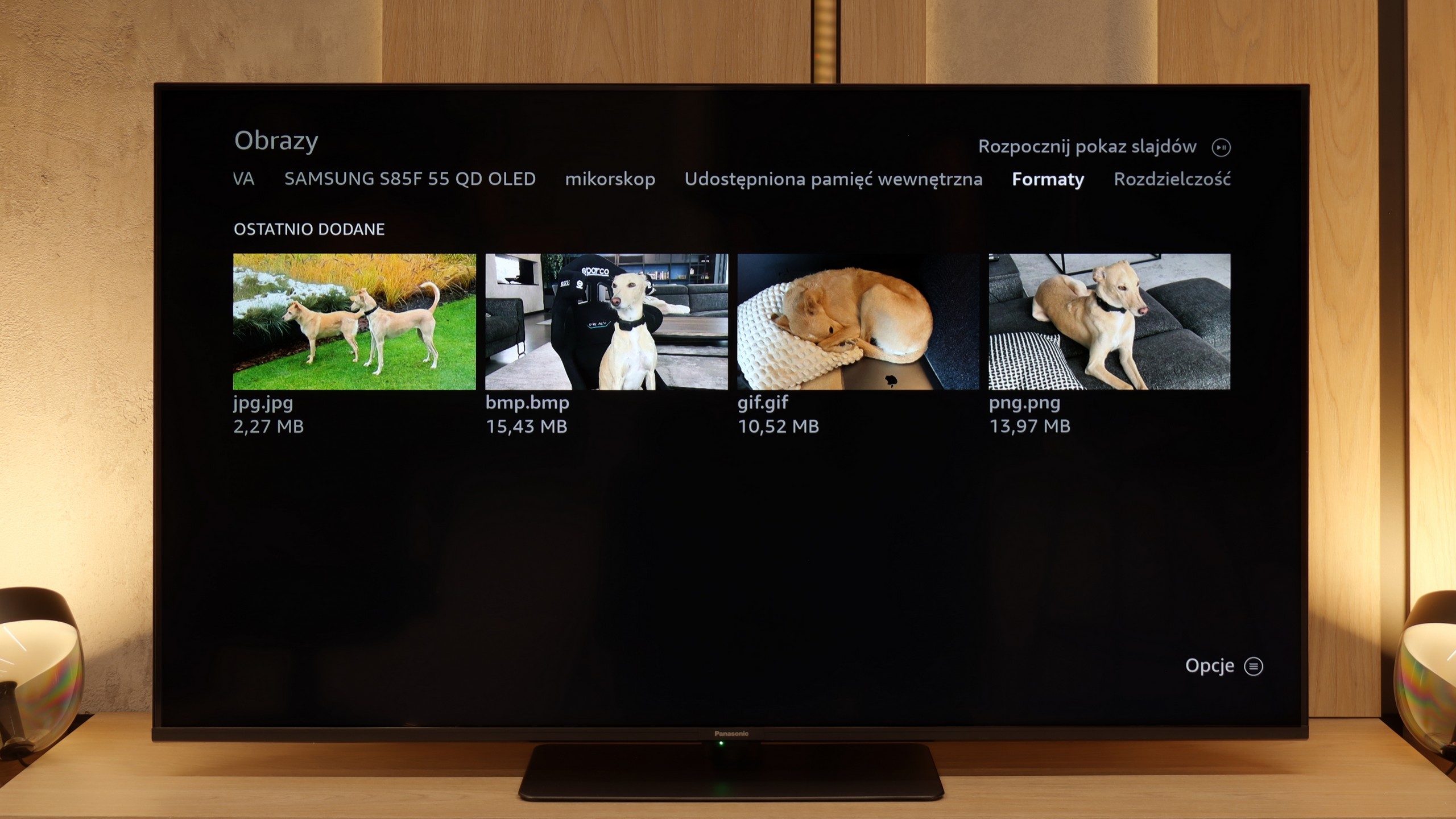
The default media player built into Philips PML9009 offers quite a wide range of capabilities but also has its limitations. It plays virtually all video formats except for .asf, which is not commonly encountered. However, there are issues with the lack of support for the H.265 HEVC codec at high bitrates and .sub files, which are quite popular. When it comes to photos, the player performs adequately, but it lacks support for some popular resolutions and formats, such as HEIC, which is used on Apple devices. The player handles audio the best, where it has no complaints. Unfortunately, due to system limitations, there is no possibility of function expansion, meaning we are left with what the manufacturer has prepared.
The biggest pain point of the built-in player with Fire TV is the lack of support for external subtitle files. If you have your own movie library and use text files, you simply won't be able to display them on this TV. The player itself handles basic video formats, but if someone wants to fully utilise files from USB, they'll probably end up installing an additional app from the store (e.g., VLC).
Apps
6.2/10
7.6/10














































Sound
6.7/10
5.8/10
- Maximum volume-87dB
- Dolby Digital Plus 7.1
- Dolby True HD 7.1
- Dolby Atmos in Dolby Digital Plus (JOC)
- Dolby Atmos in Dolby True HD
- DTS:X in DTS-HD MA
- DTS-HD Master Audio
To begin with, it is worth noting that sound quality is a subjective matter. The built-in audio system in Philips PML9009 stands out with clear high tones, but the bass is quite flat and significantly worse than in competing models in the same price range.
Here the Panasonic W85B unfortunately has nothing to brag about. The speakers sound flat and quite “plasticky”, so there’s definitely no cinematic experience to be had here. There's no depth, no clear bass – just basic sound that’s simply meant to “be”. It's a pity because we thought the external subwoofer used here would actually make a difference. Unfortunately, we were mistaken. The only advantage is that the TV can play really loud. This may appeal to older users who often need higher volume to comfortably watch programs or news. For everyday TV watching, it’s sufficient, but if someone is thinking about movies and games – an additional soundbar or audio system is basically a requirement.
Sound Quality Test
No sound test video
Acoustic Measurements
No acoustic data
87dBC (Max)
75dBC
